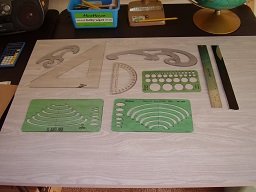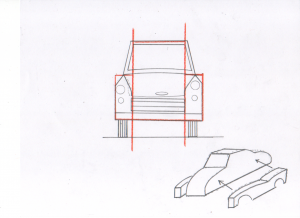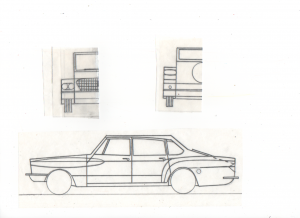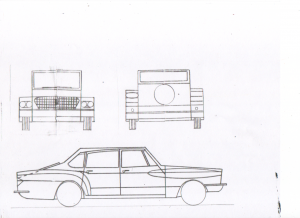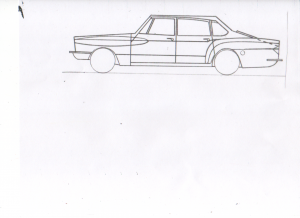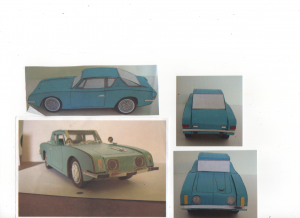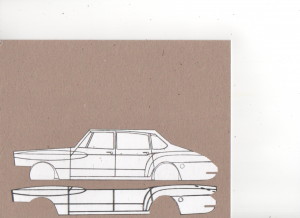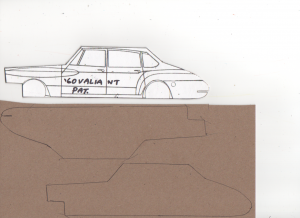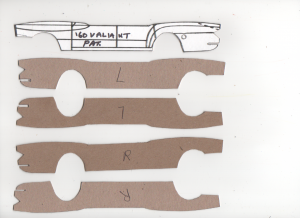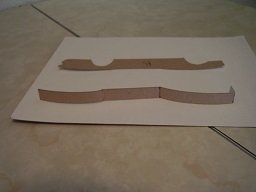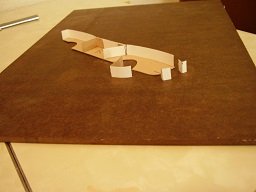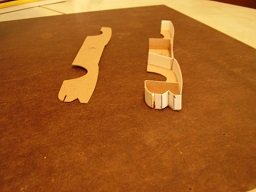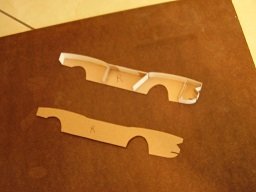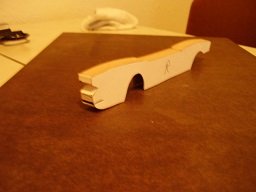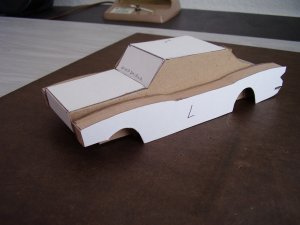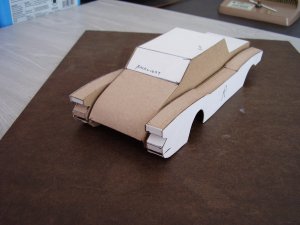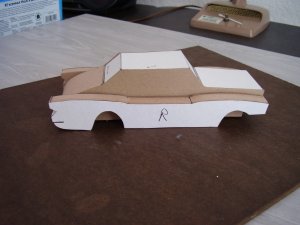I plan to show my whole design process, warts and all. First, I make a raw drawing. I want a scale of about 1/2 inch to the foot, so I draw a one inch diameter circle with a circle gauge, for the wheel. Then, looking at reference pictures such as ad drawings and photos of the real car, I draw a profile in proportion to that wheel.
After the profile drawing is made, on a strip of paper I make tick marks to measure the heights of any features (splash pans, bumpers, grilles, lights, etc.) that will show in the lateral (end) views. The raw drawing is where I am free to make any necessary corrections.
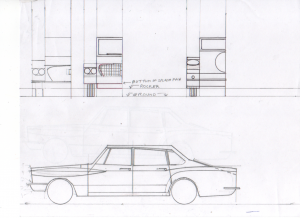
After the profile drawing is made, on a strip of paper I make tick marks to measure the heights of any features (splash pans, bumpers, grilles, lights, etc.) that will show in the lateral (end) views. The raw drawing is where I am free to make any necessary corrections.

Last edited:


